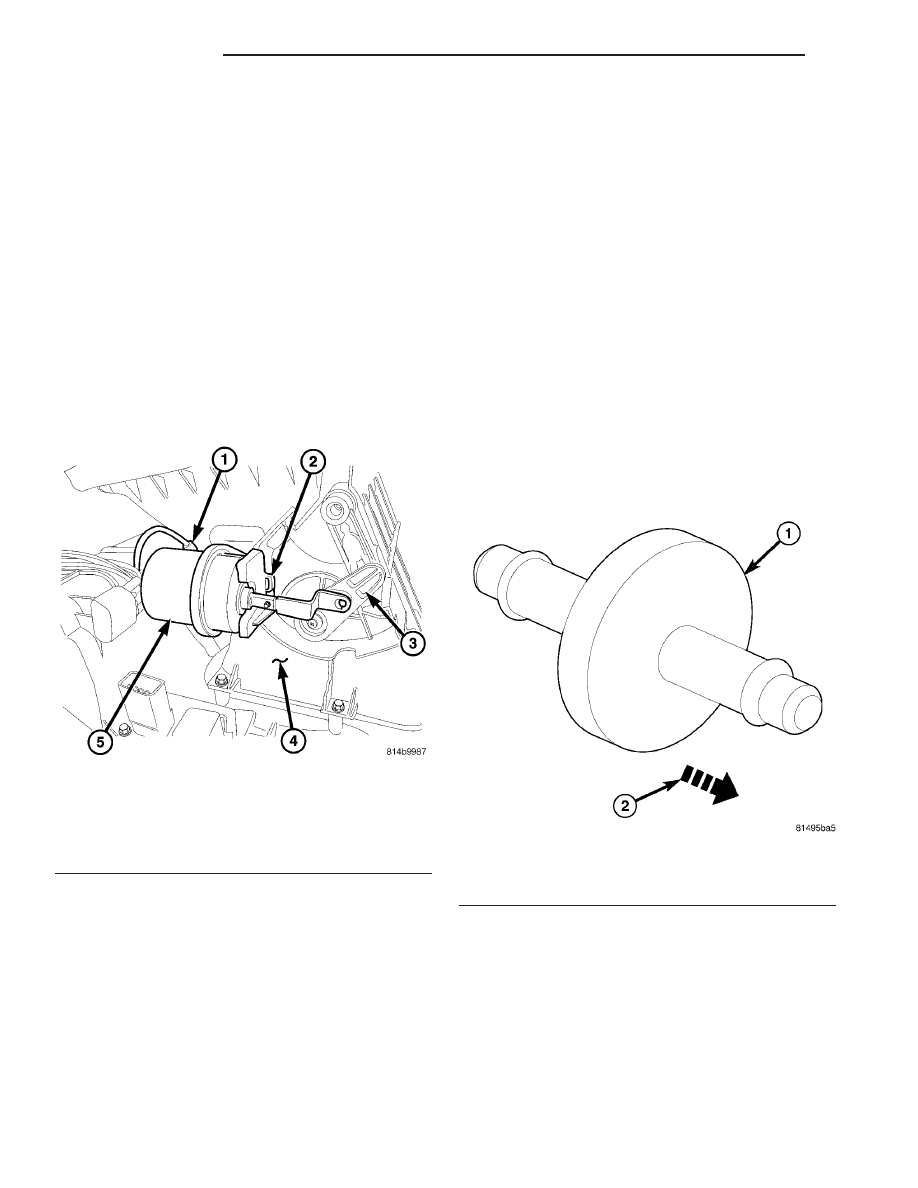Jeep Wrangler TJ. Manual - part 592

(1) Disconnect and isolate the negative battery
cable.
(2) Remove the glove box (Refer to 23 - BODY/IN-
STRUMENT PANEL/GLOVE BOX - REMOVAL).
(3) Remove the right front speaker bezel and
speaker
(Refer
to
8
-
ELECTRICAL/AUDIO/
SPEAKER - REMOVAL).
(4) Using a small flat bladed tool, gently pry the
actuator latch while pulling firmly outwards on the
actuator (Fig. 34). Rotate and tilt the actuator as
required to remove the actuator from the HVAC air
inlet housing mount.
(5) Disengage the actuator rod from the push-pin
type retainer located on the end of the recirculation
door actuator lever.
(6) Disconnect the vacuum harness from the recir-
culation door actuator and remove the actuator from
the vehicle.
INSTALLATION
NOTE: The recirculation-air door and actuator are
used only on models equipped with A/C.
(1) Connect the vacuum harness to the recircula-
tion door actuator.
(2) Engage the actuator rod to the push-pin type
retainer located on the end of the recirculation door
actuator lever.
(3) Rotate and tilt the recirculation door actuator
as required to install the actuator mount onto the
HVAC air inlet housing mounting boss. Push the
actuator onto the mount until it snaps into the
locked position.
(4) Install the right front speaker and speaker
bezel (Refer to 8 - ELECTRICAL/AUDIO/SPEAKER -
INSTALLATION).
(5) Install the glove box (Refer to 23 - BODY/IN-
STRUMENT PANEL/GLOVE BOX - INSTALLA-
TION).
(6) Reconnect the negative battery cable.
VACUUM CHECK VALVE
DESCRIPTION
Two vacuum check valves (Fig. 35) are installed in
the accessory vacuum supply system. One is on the
accessory vacuum supply line in the engine compart-
ment, near the vacuum tap on the engine intake
manifold. A second vacuum check valve is located at
the HVAC system takeout. The vacuum check valves
are designed to allow vacuum to flow in only one
direction through the vacuum supply circuits.
OPERATION
The use of the two vacuum check valves help to
maintain the system vacuum needed to retain the
selected A/C-heater mode settings. The check valves
prevent the engine from bleeding down system vac-
uum through the intake manifold during extended
heavy engine load (low engine vacuum) operation.
The vacuum check valves cannot be repaired and,
if faulty or damaged, must be replaced.
Fig. 34 Recirculation Door Actuator
1 - VACUUM HARNESS
2 - ACTUATOR LATCH
3 - RECIRCULATION DOOR ACTUATOR LEVER
4 - HVAC AIR INLET HOUSING
5 - RECIRCULATION DOOR ACTUATOR
Fig. 35 Vacuum Check Valve - Typical
1 - VACUUM CHECK VALVE
2 - DIRECTION OF AIR FLOW
24 - 34
CONTROLS
TJ
RECIRCULATION DOOR ACTUATOR (Continued)